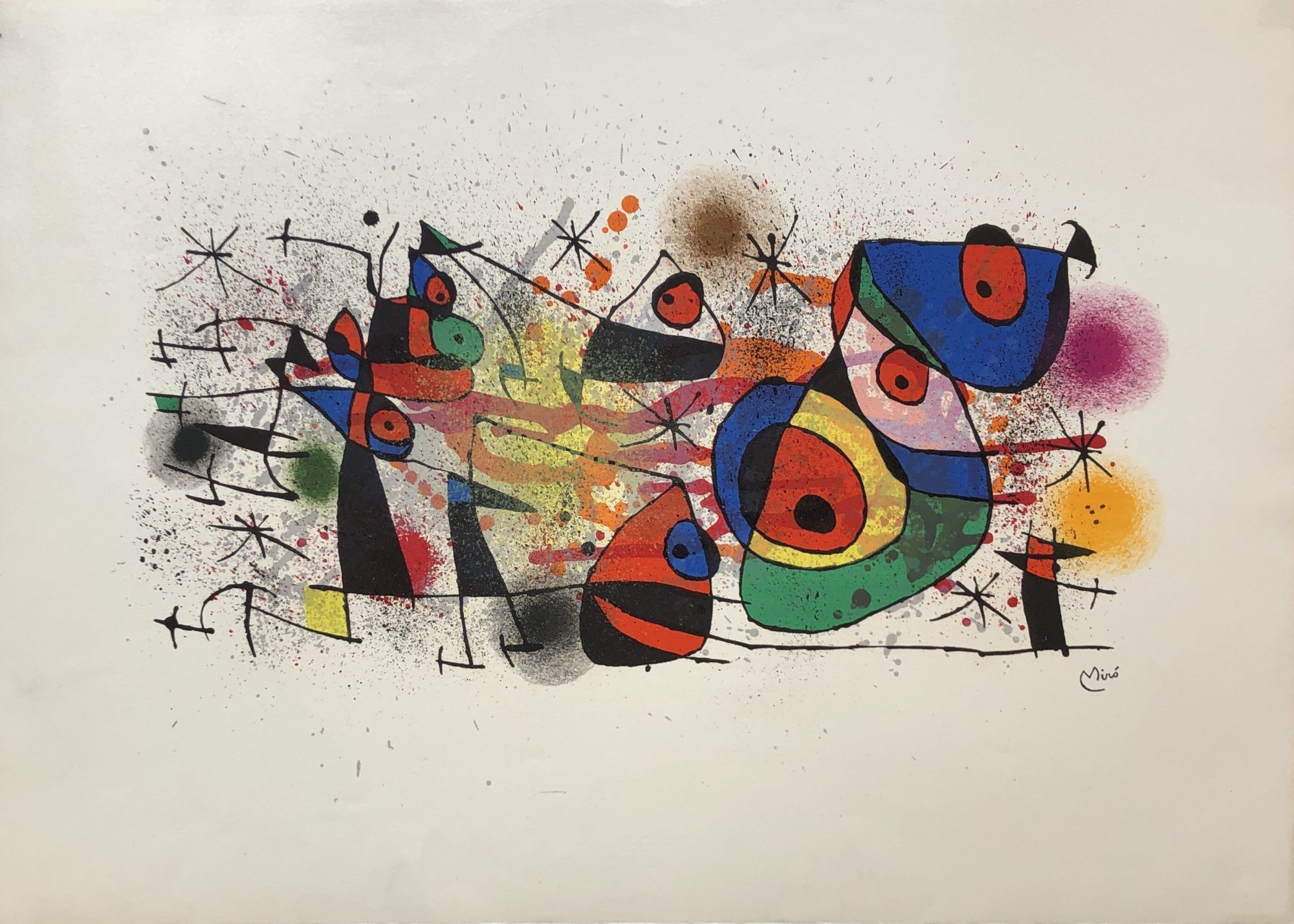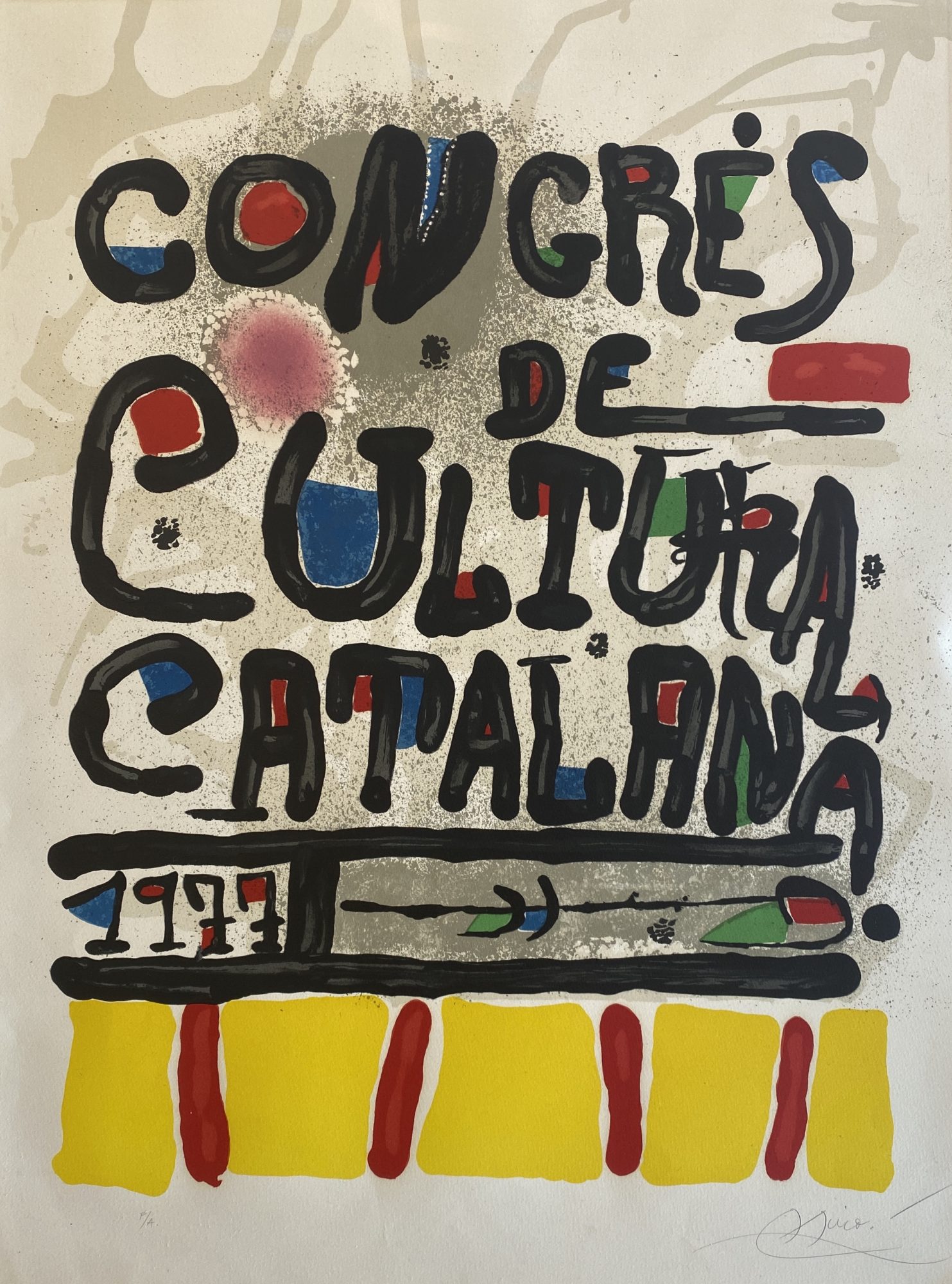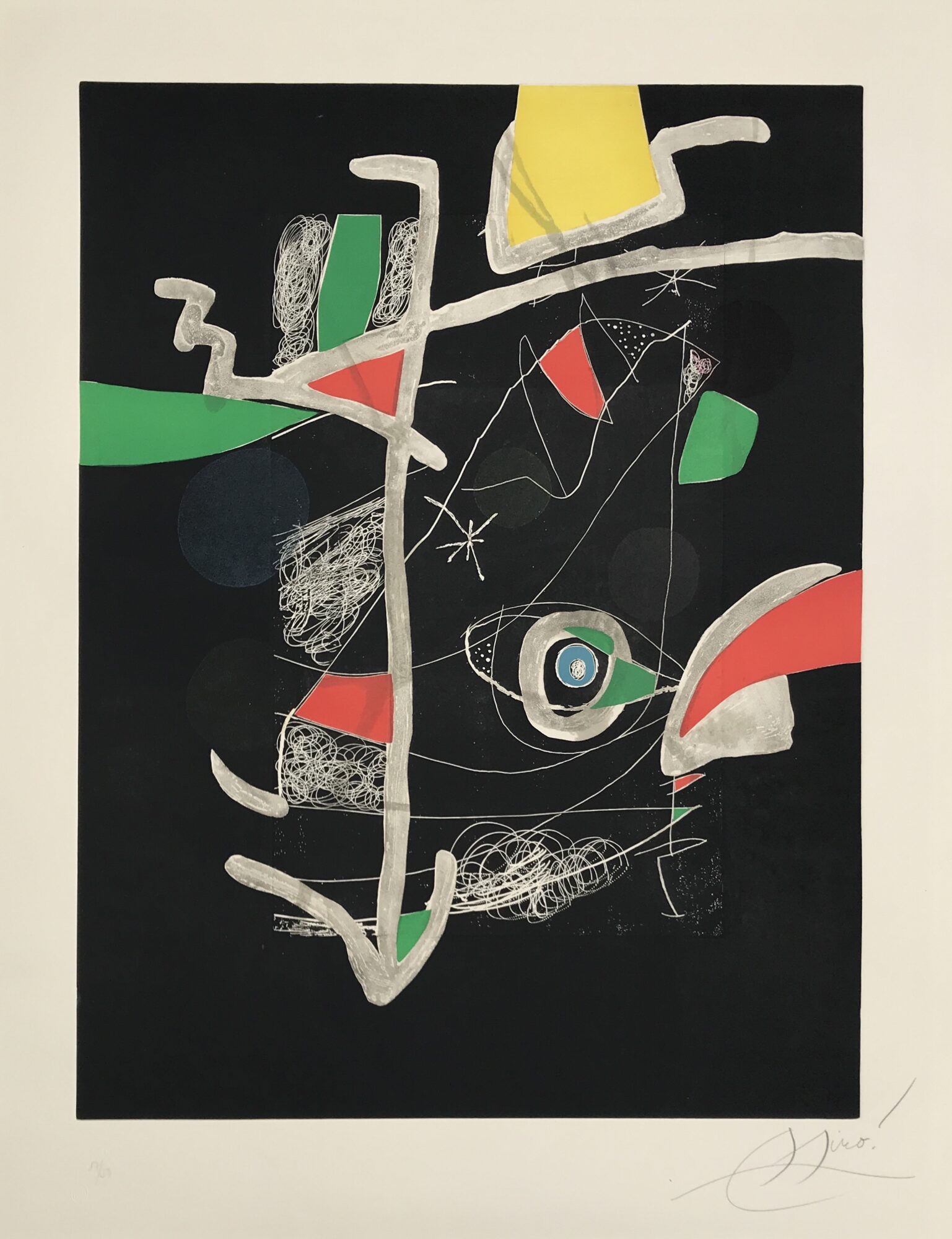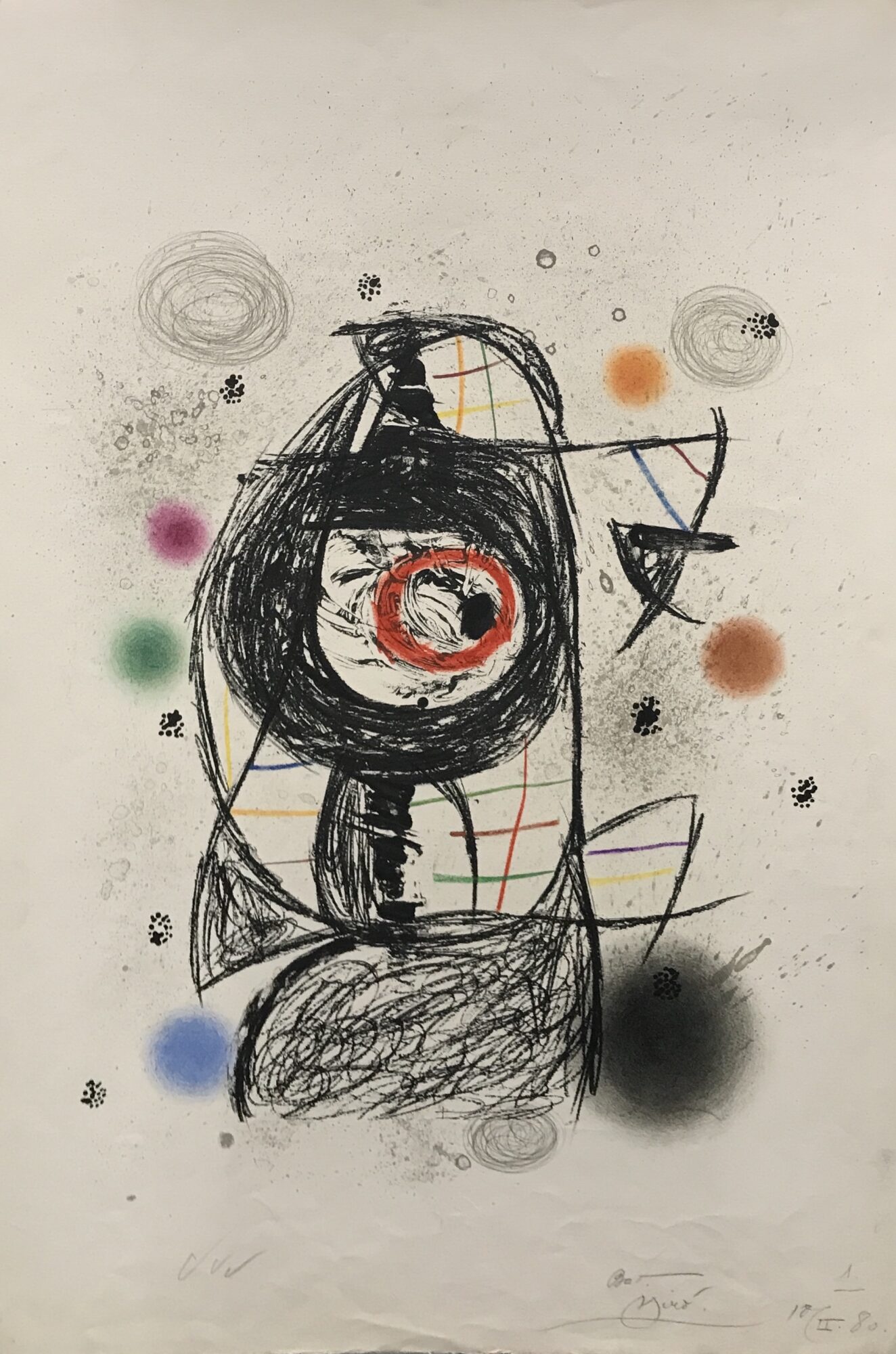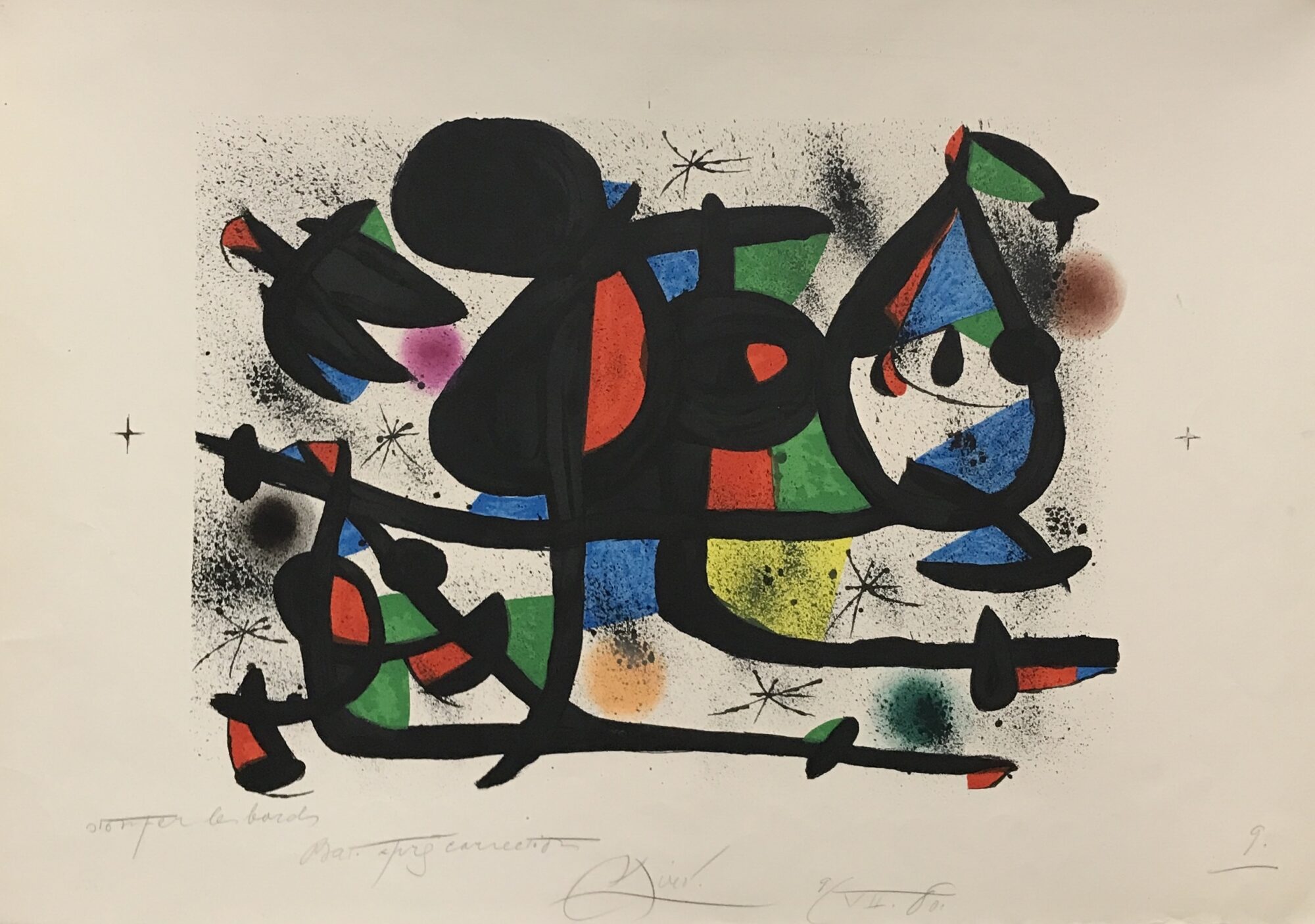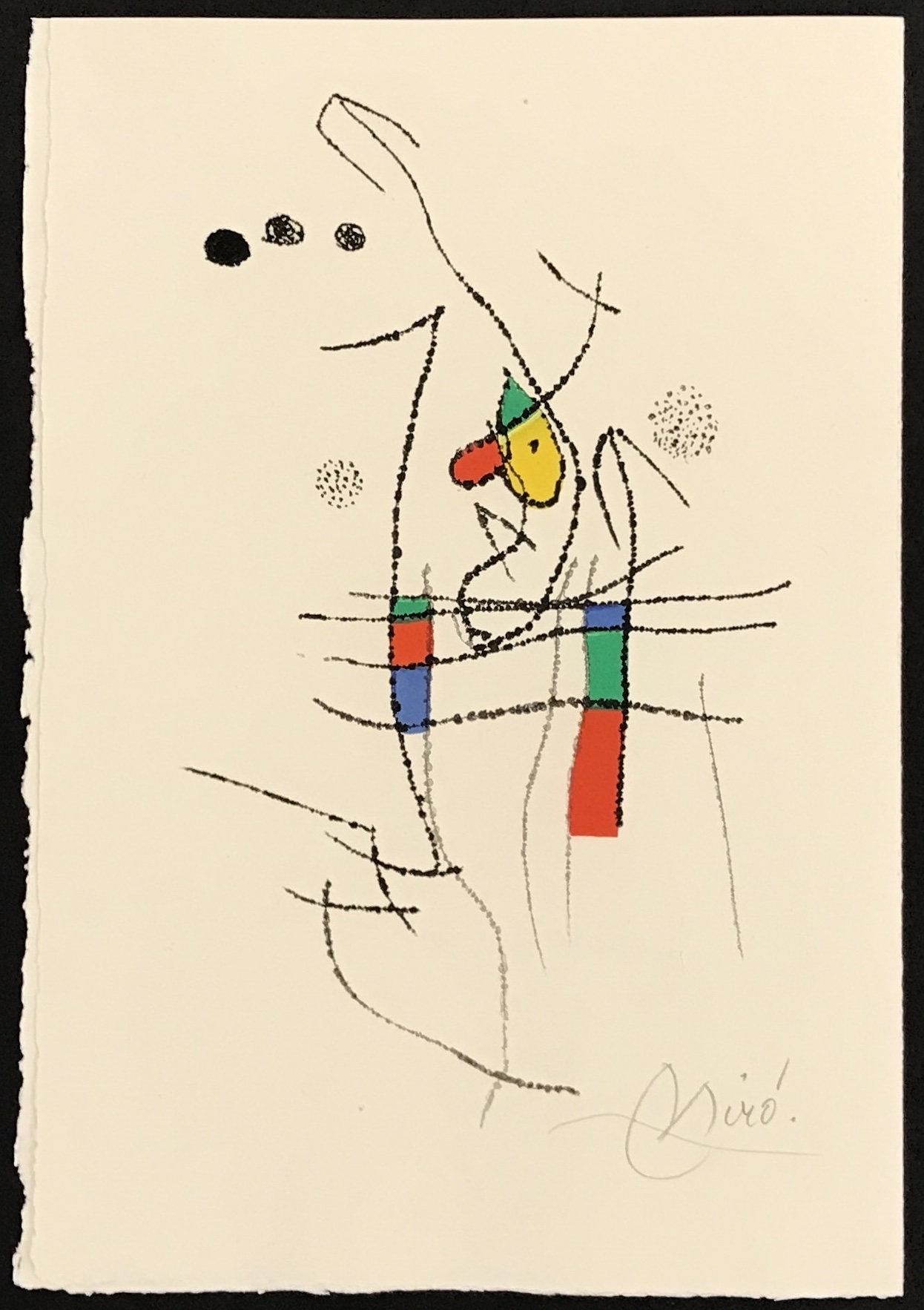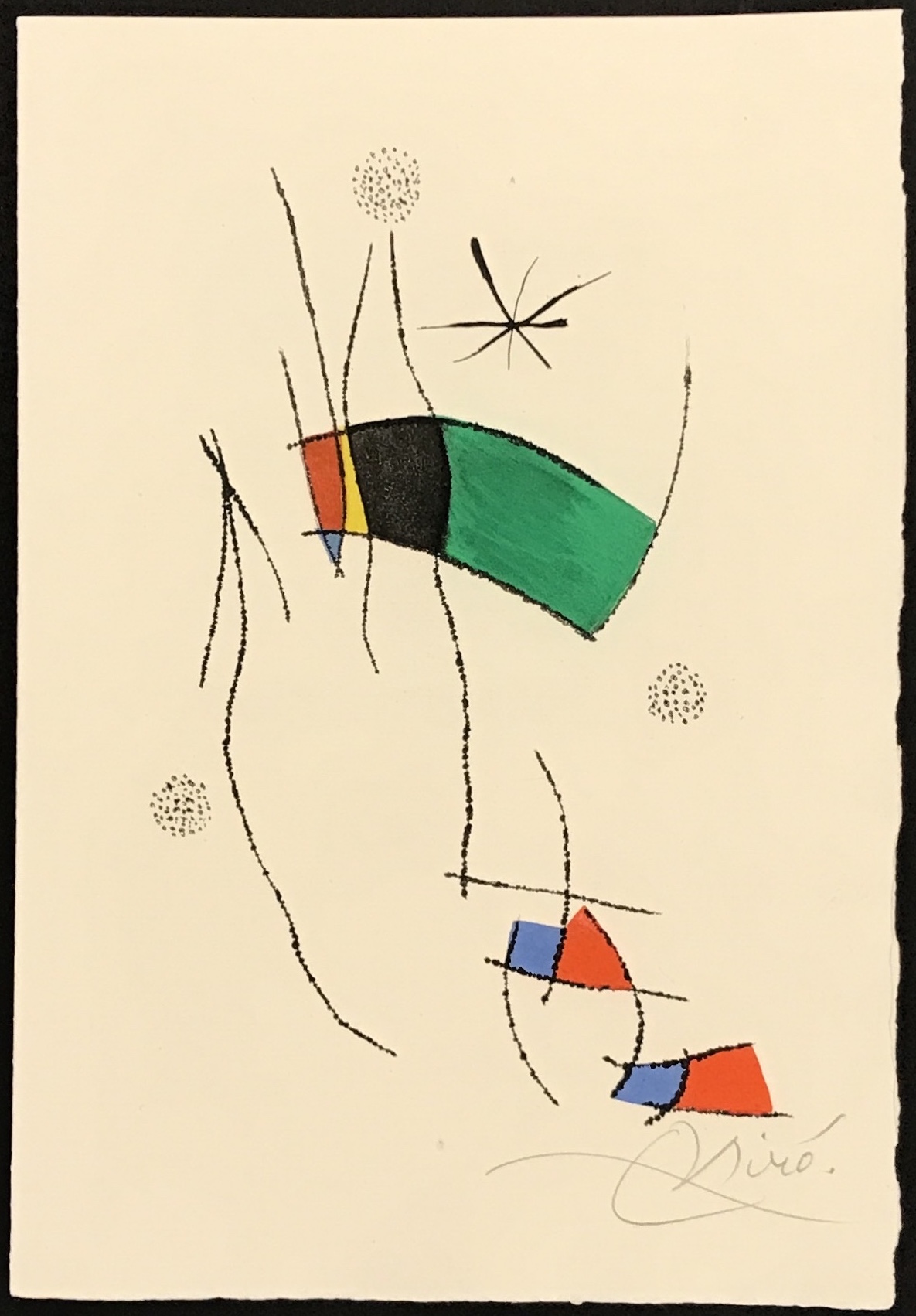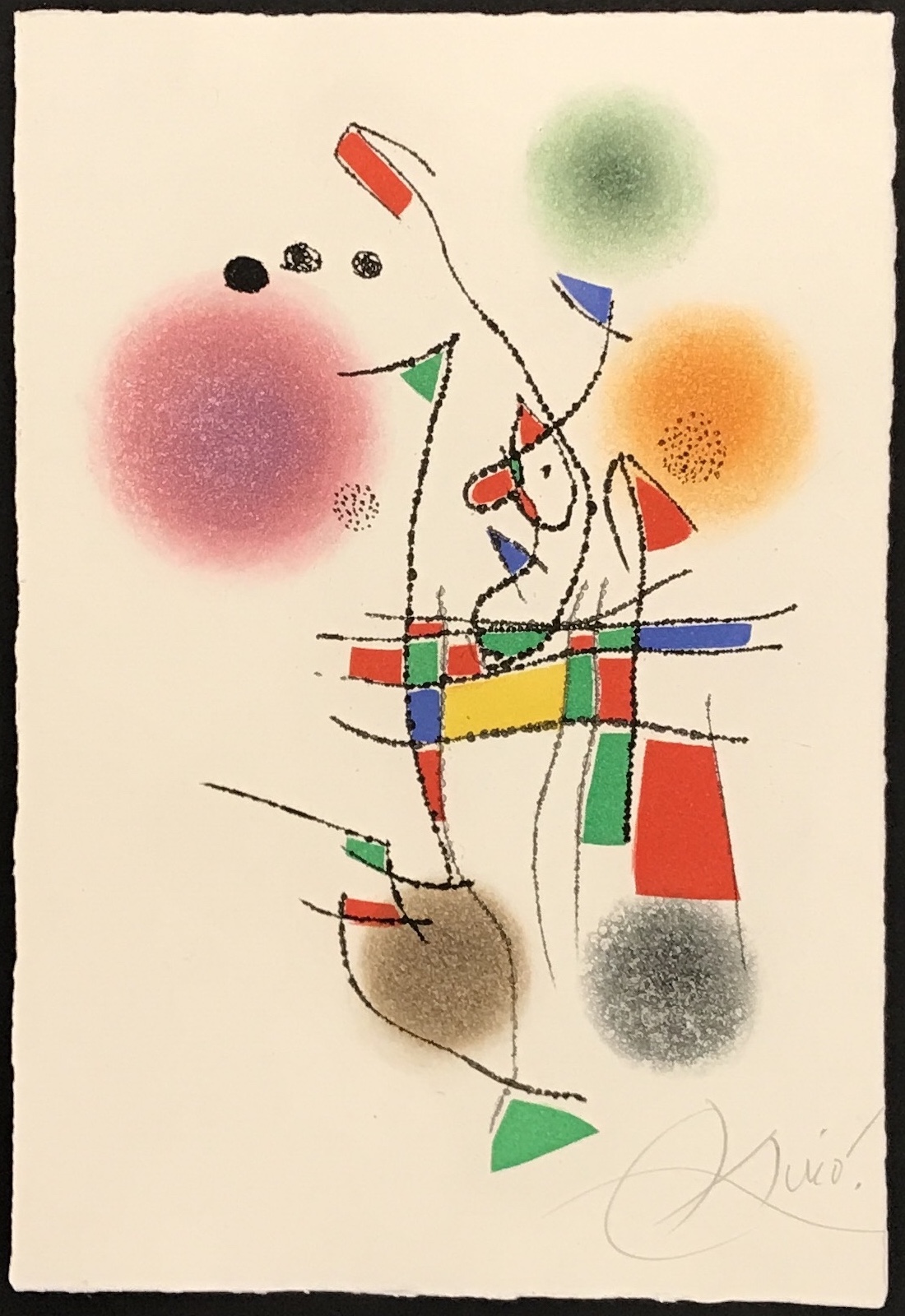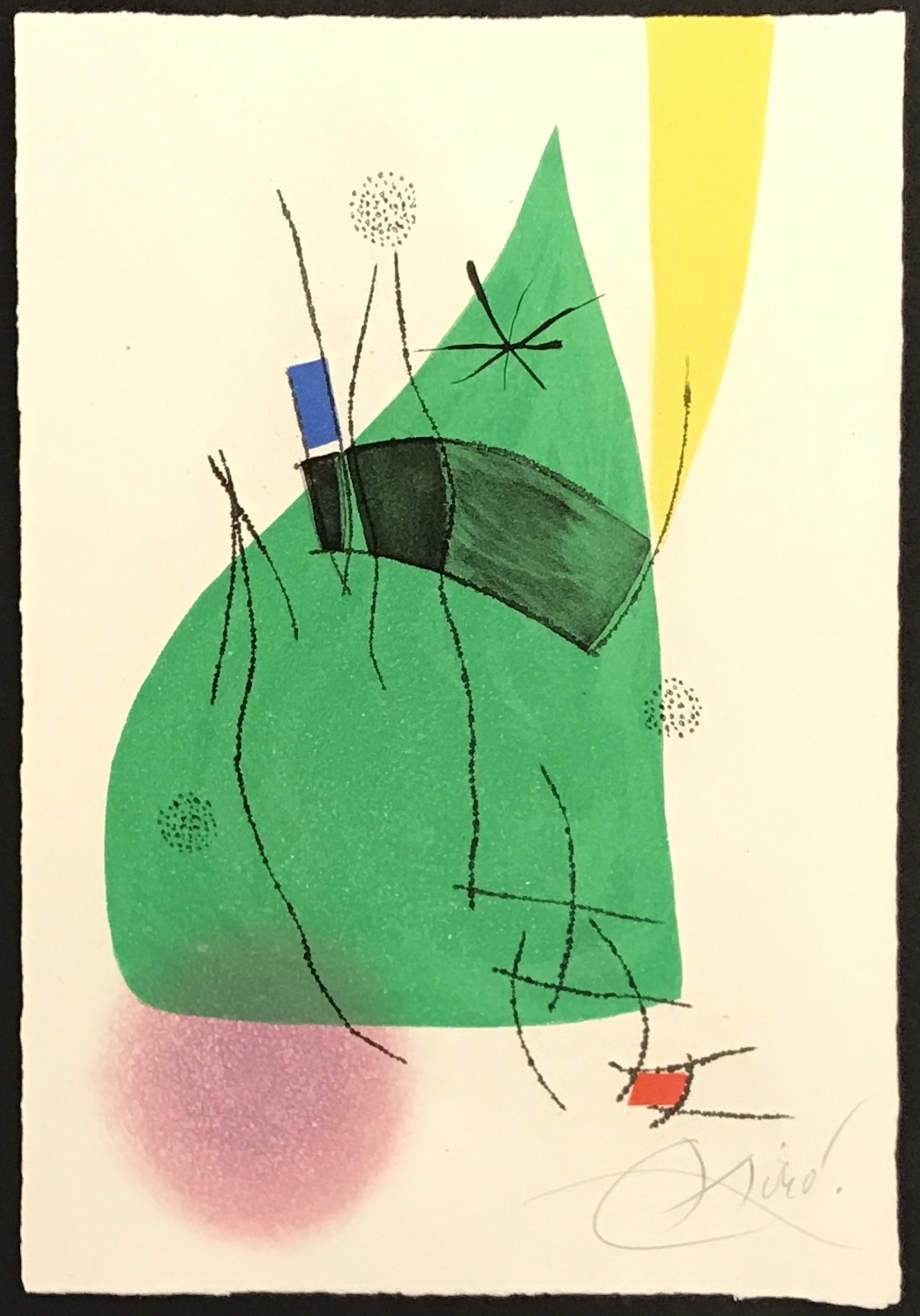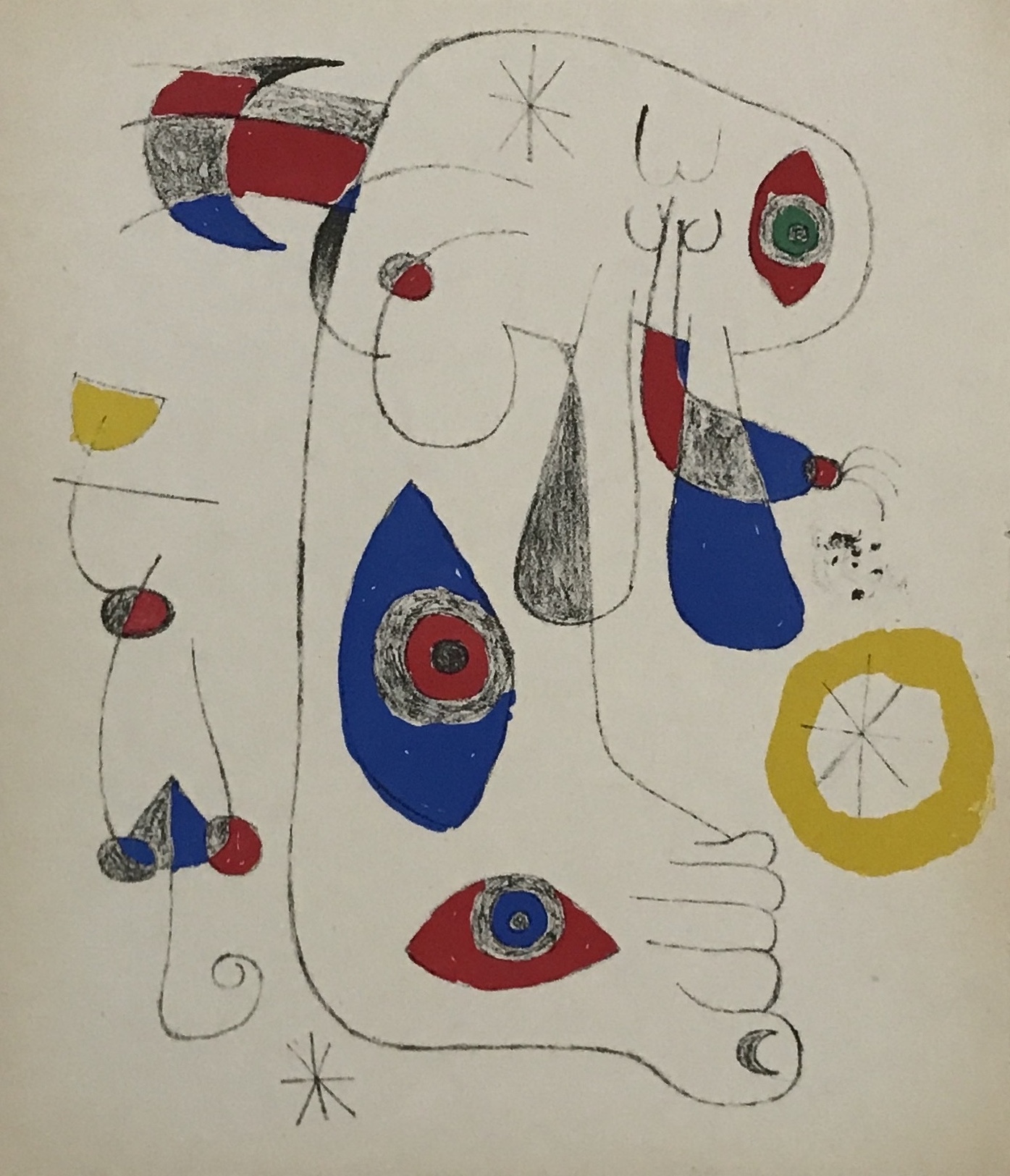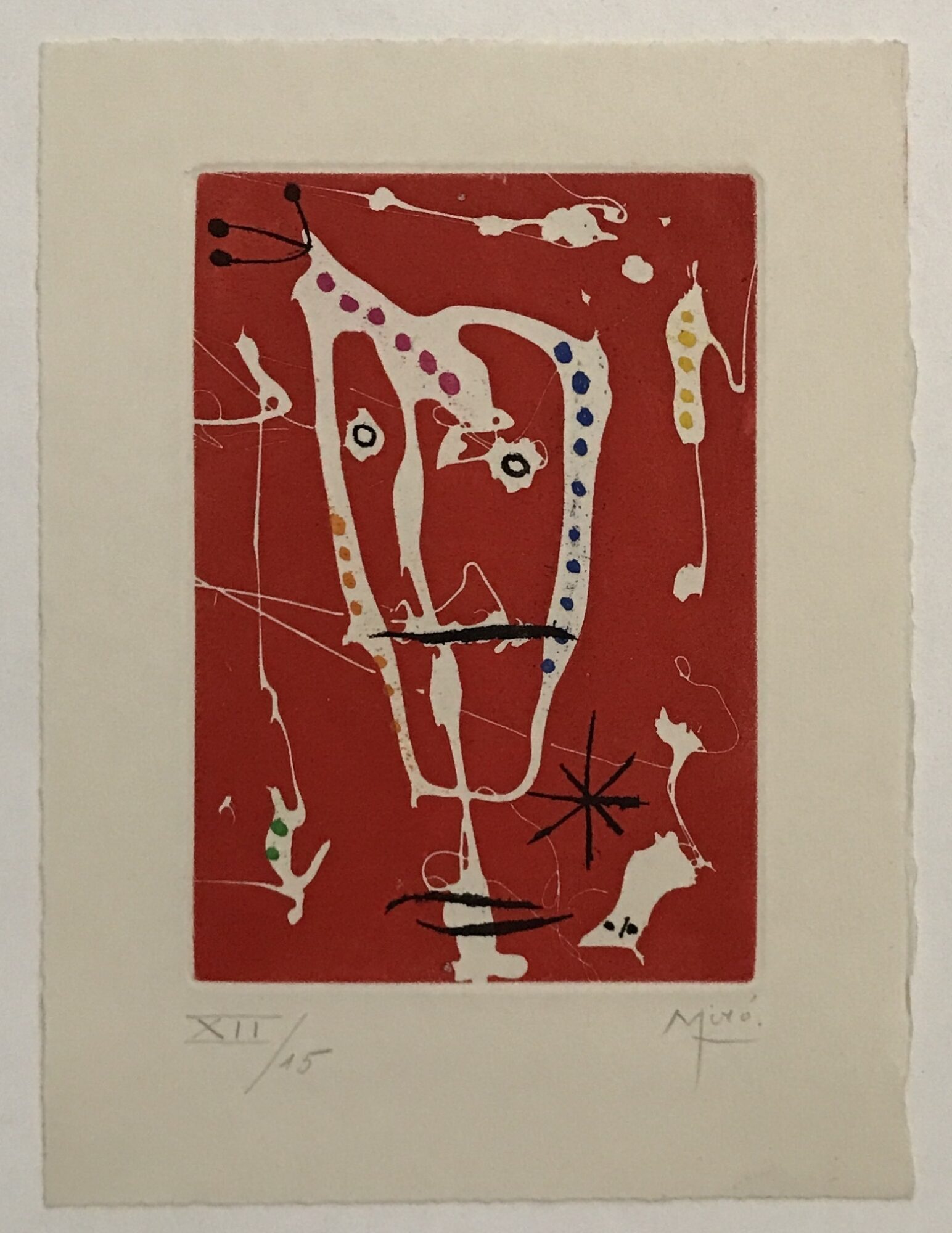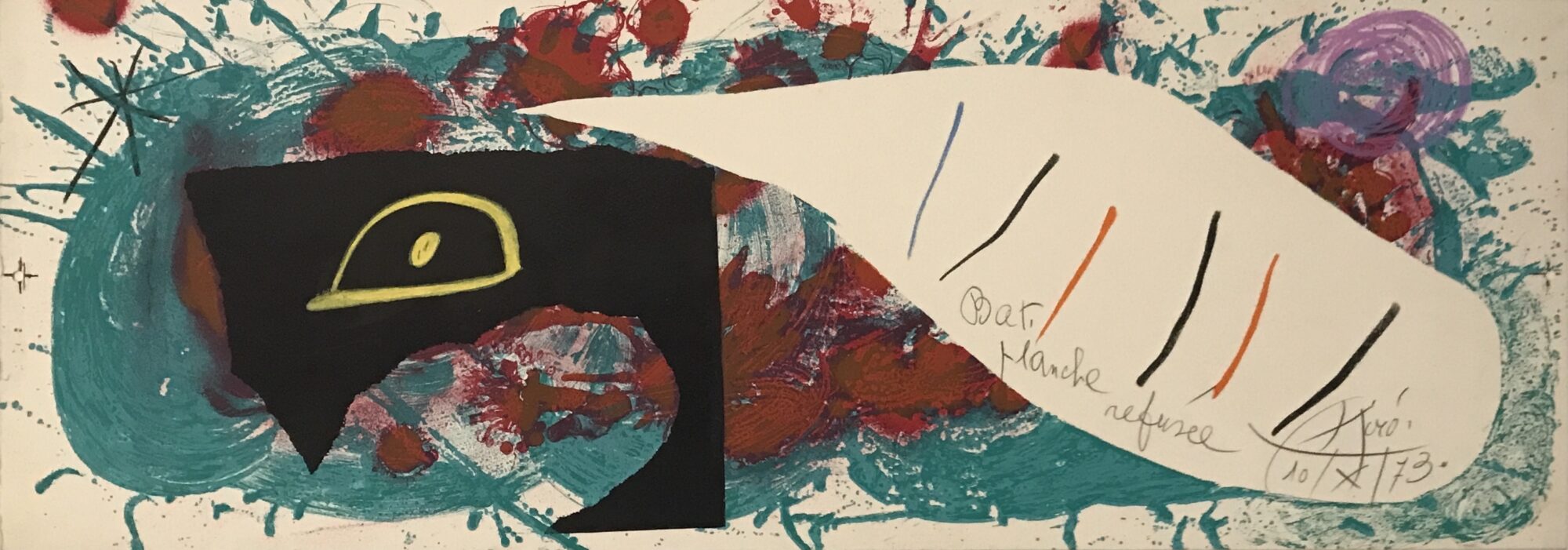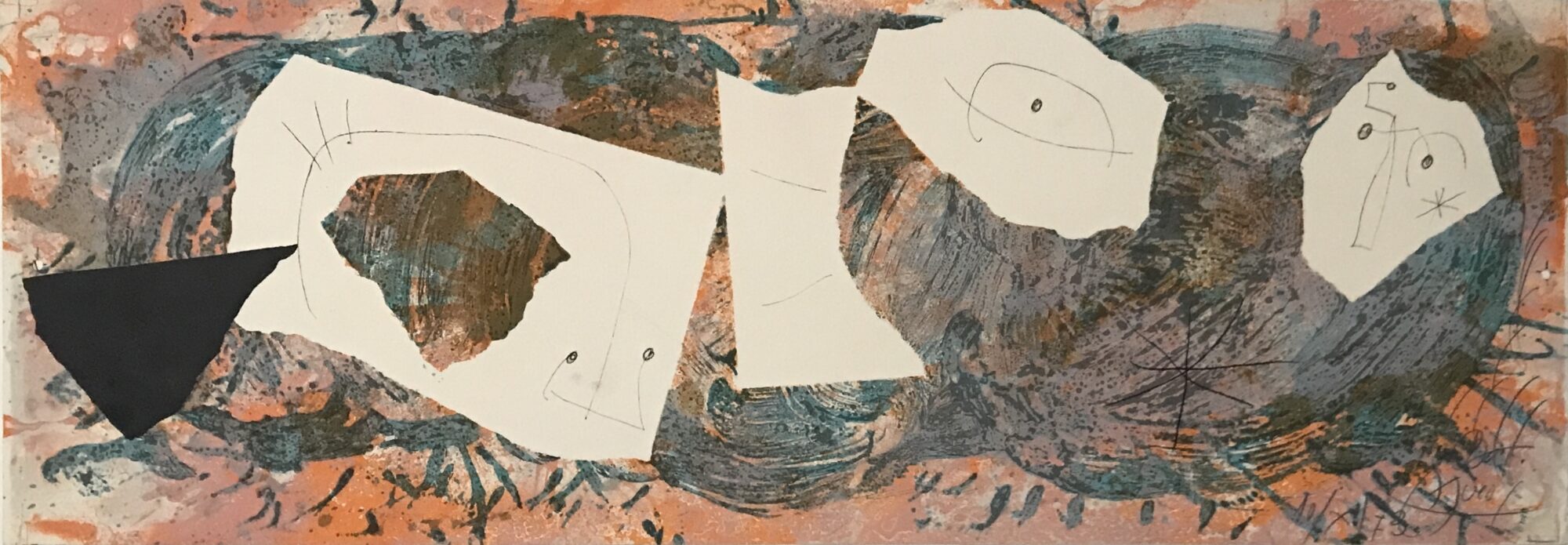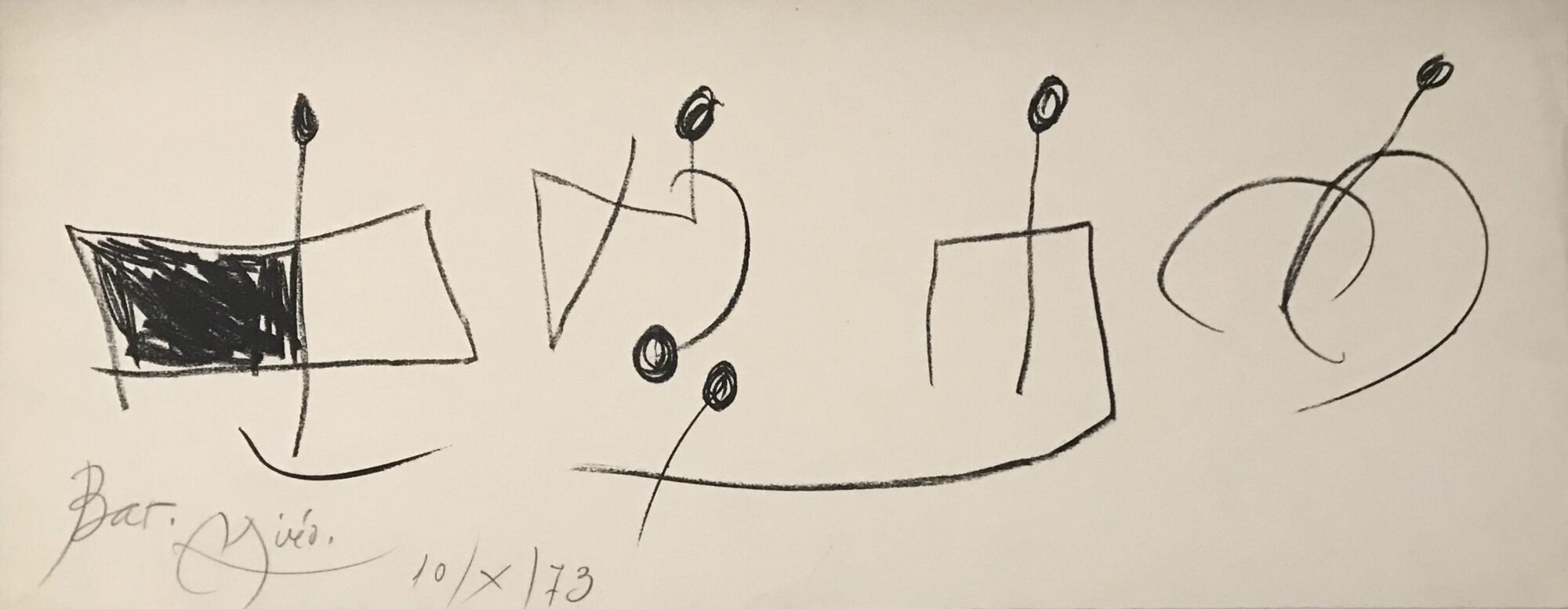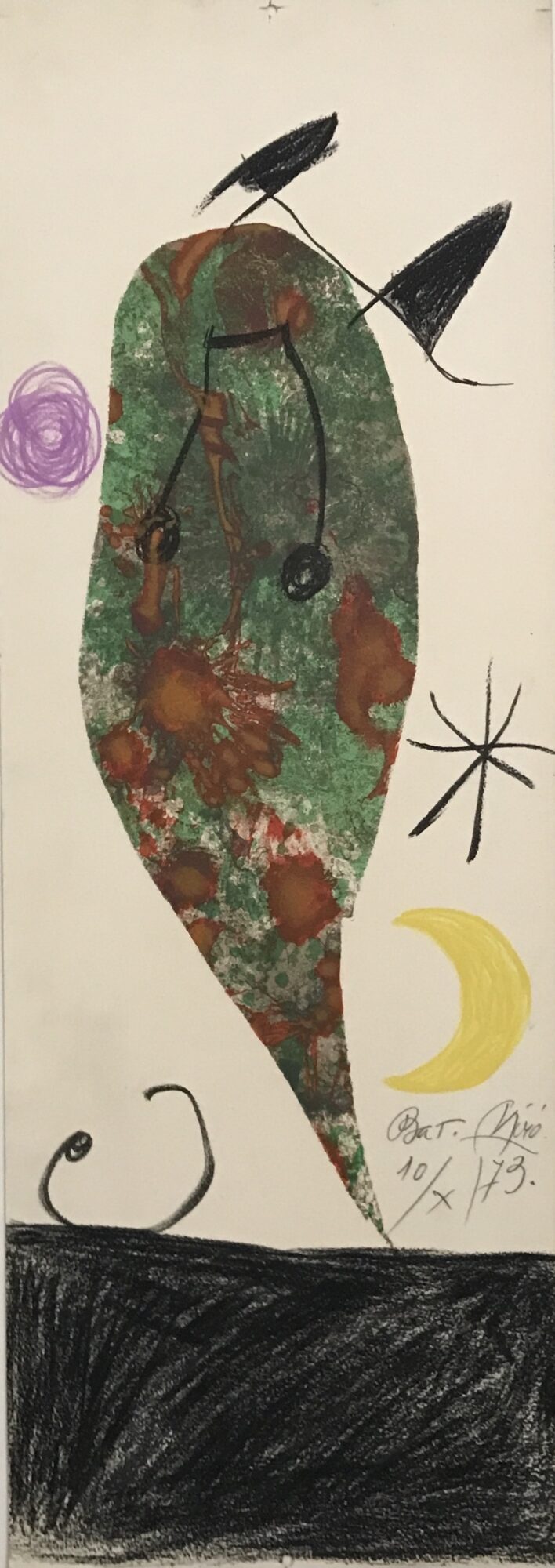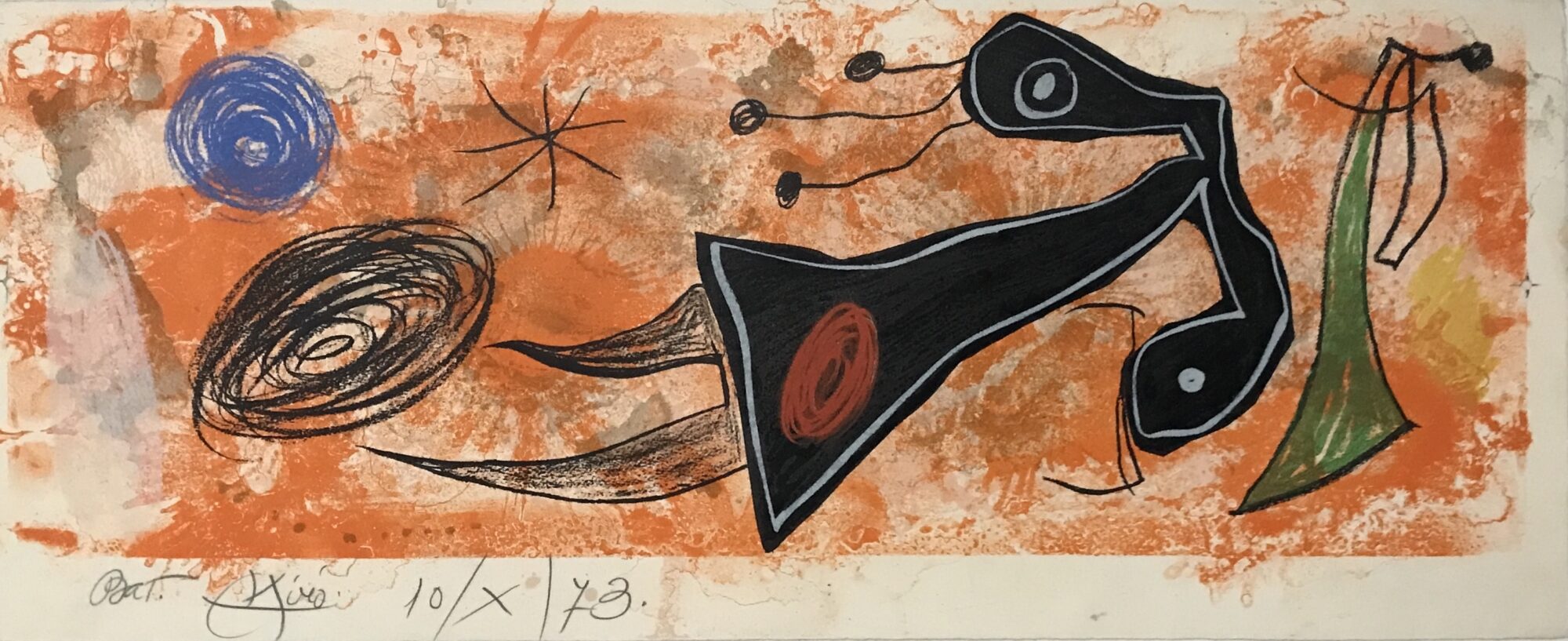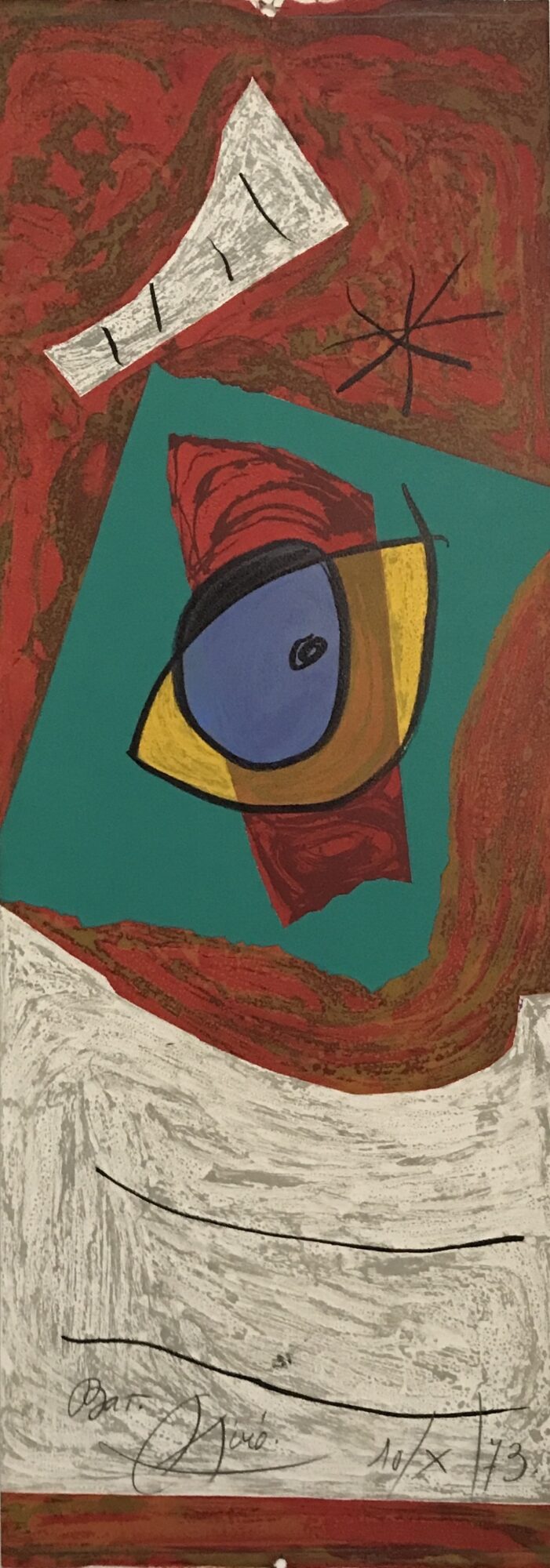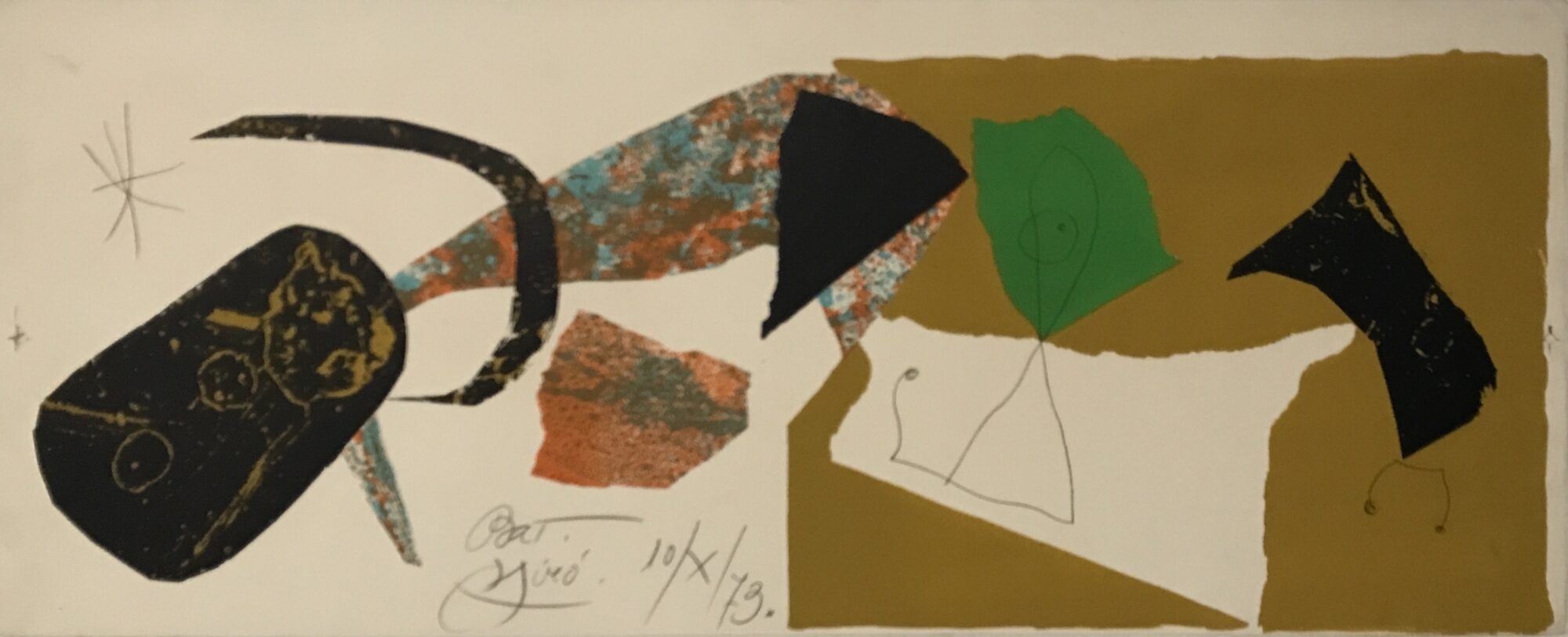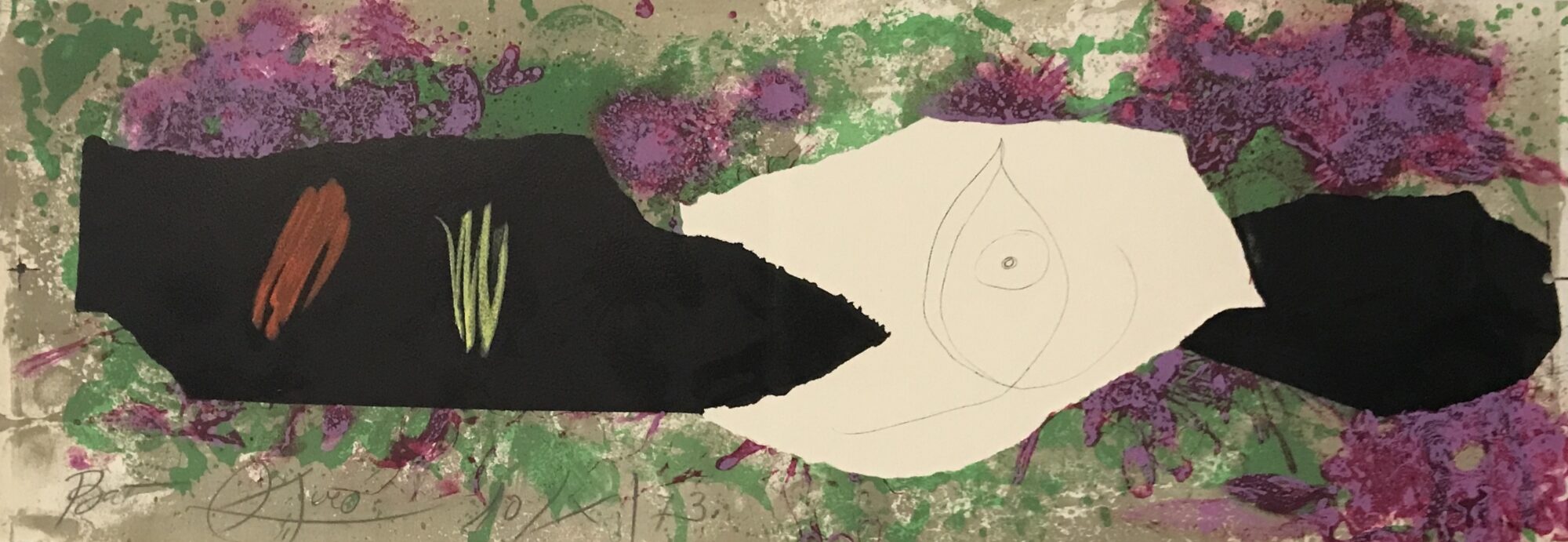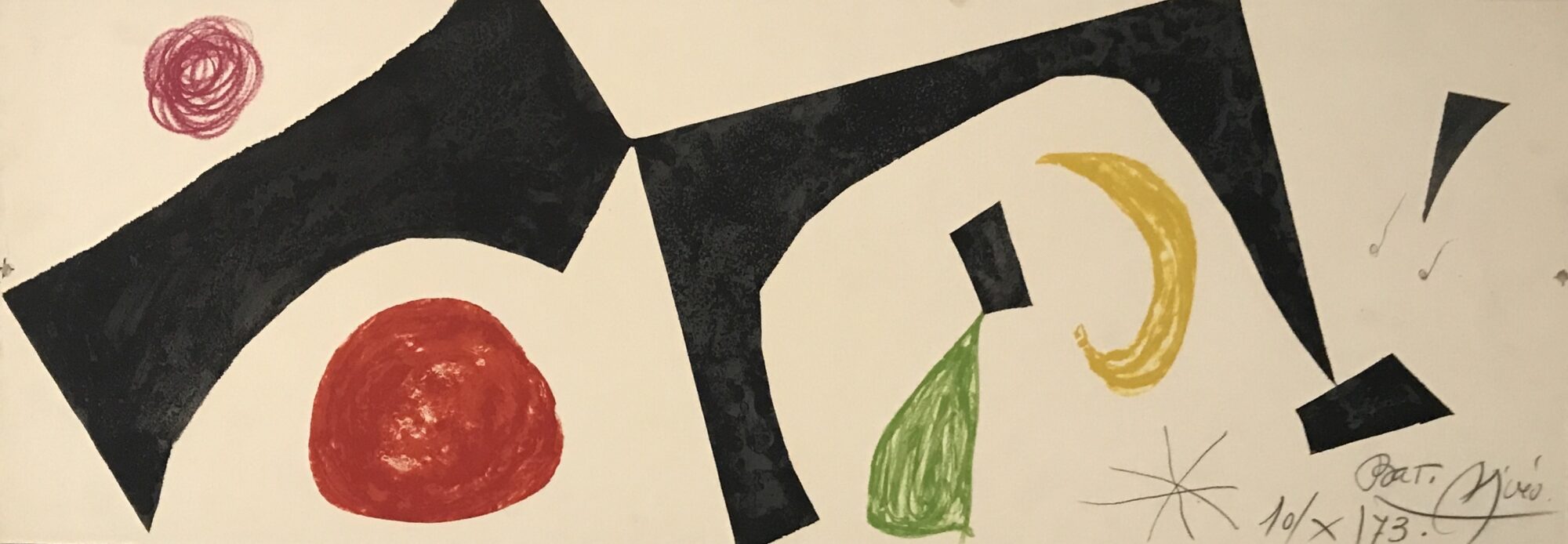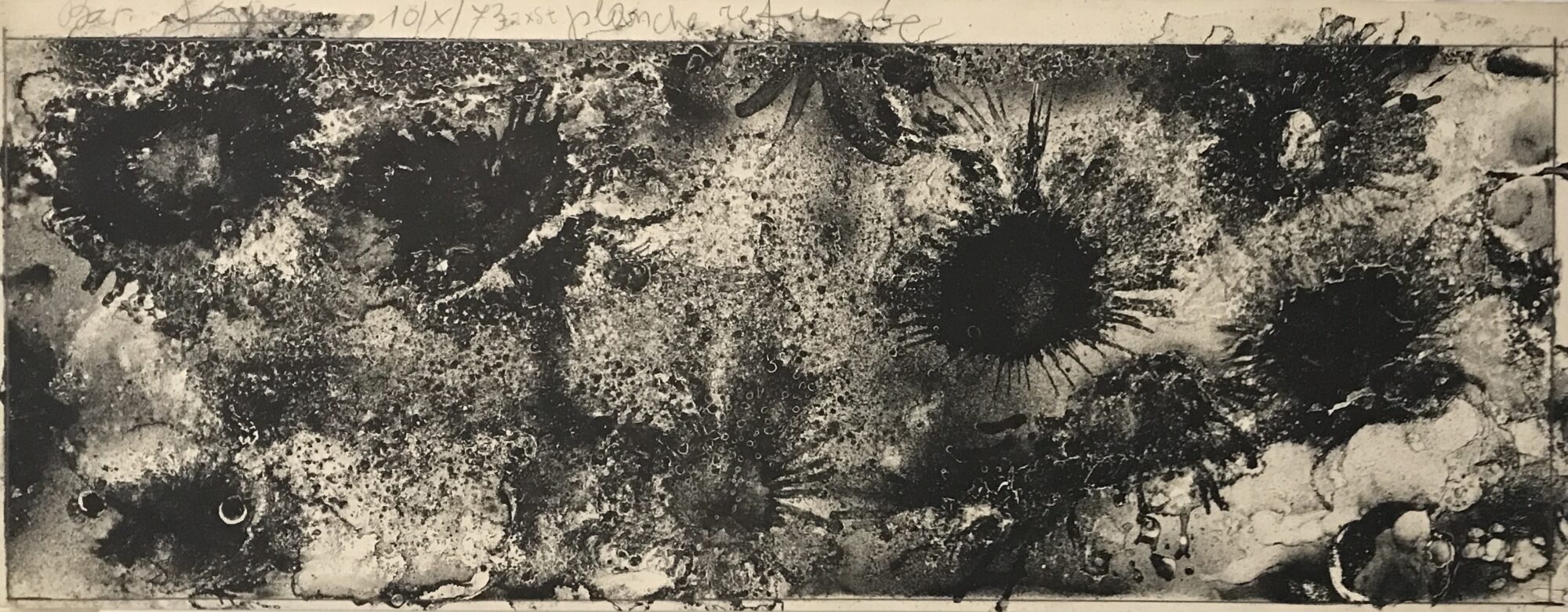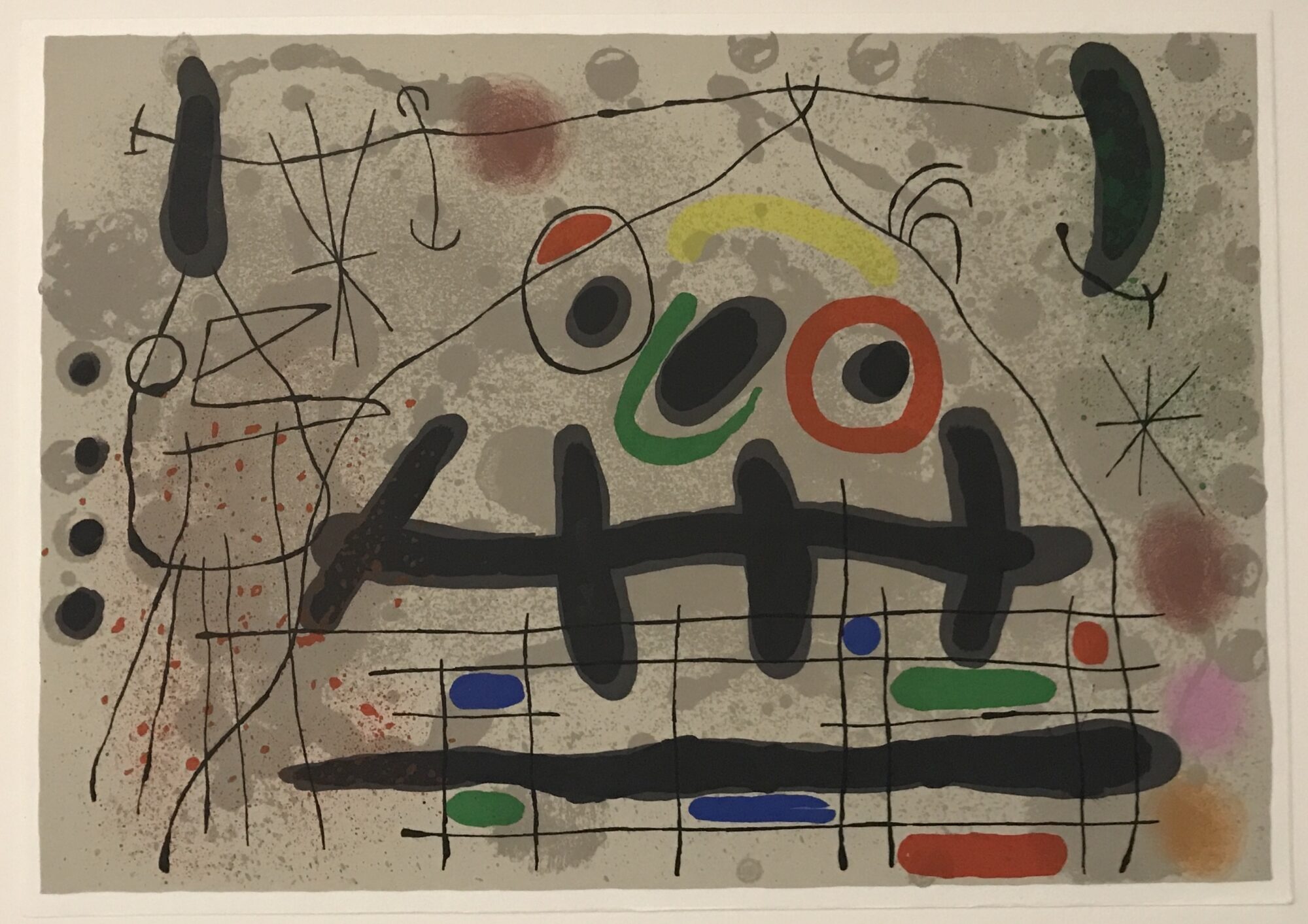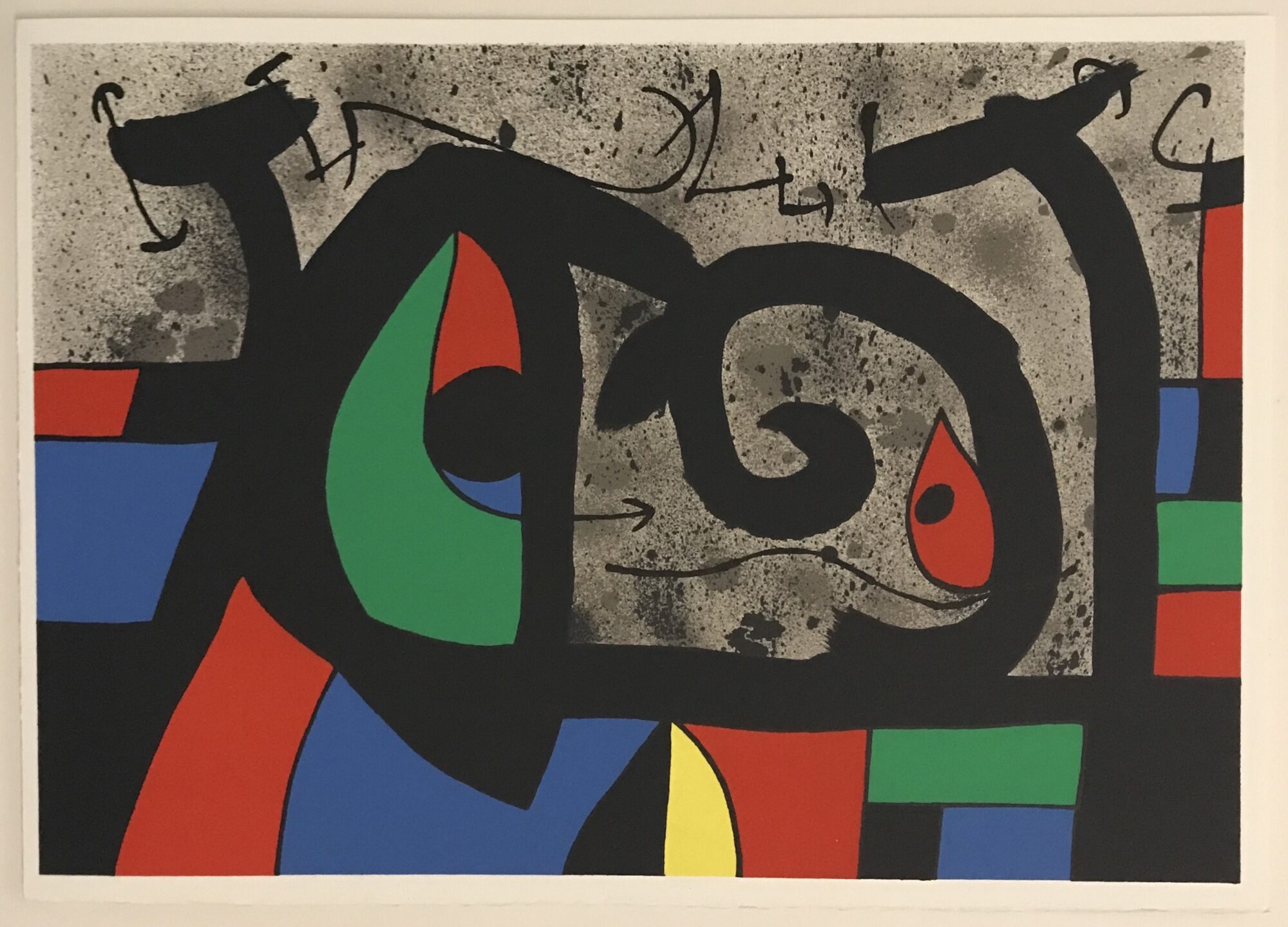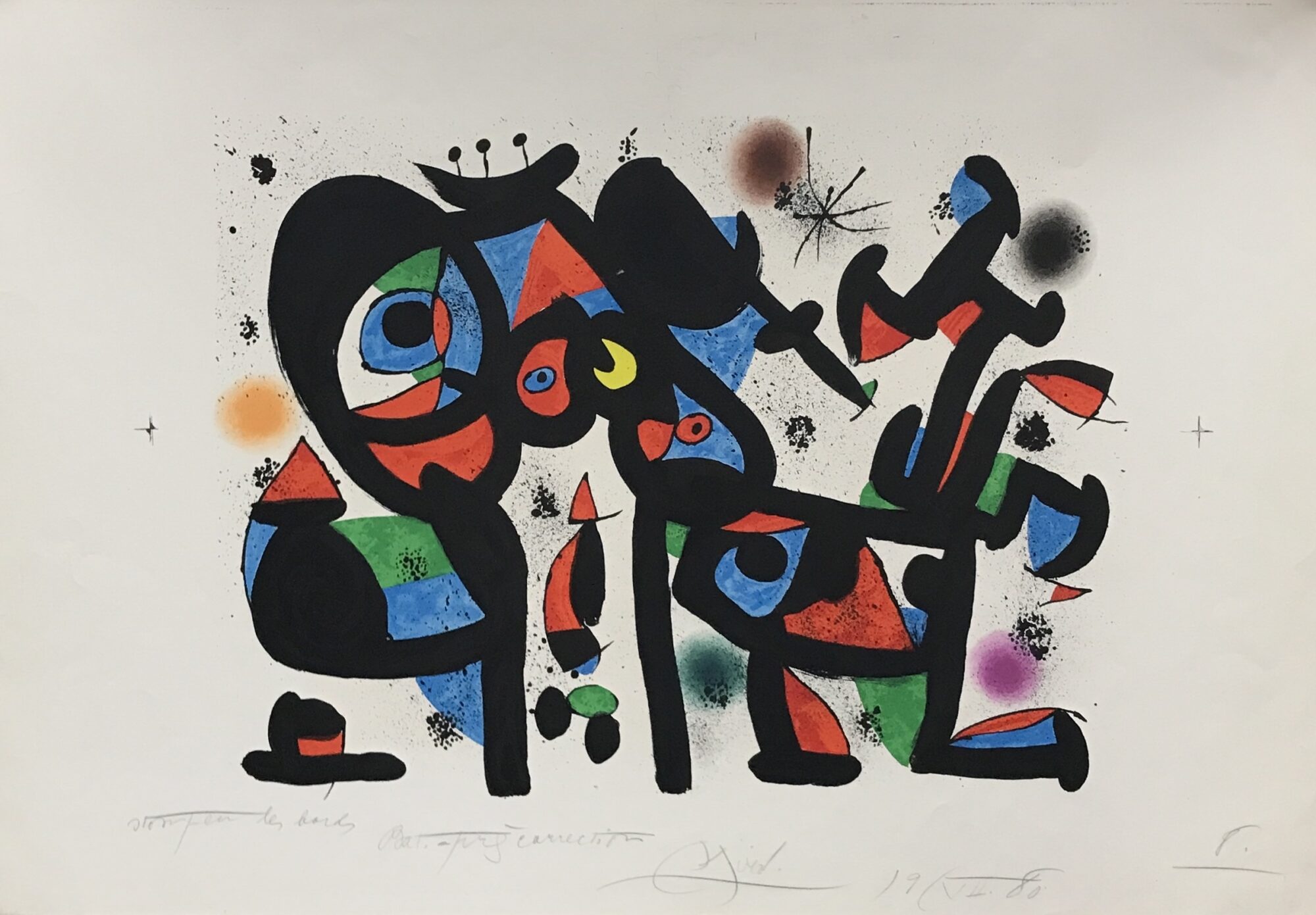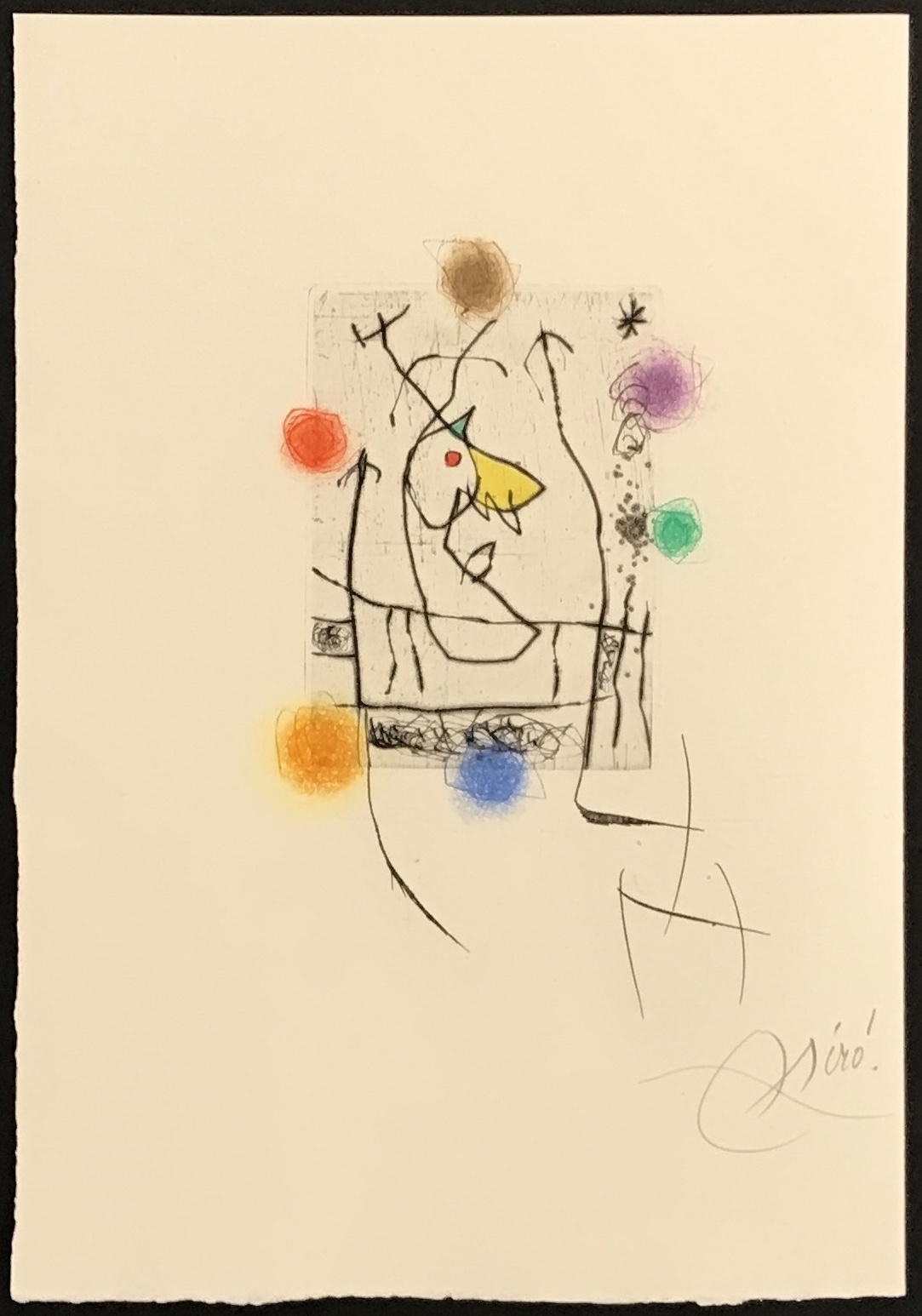Artist Joan Miro was born April 20, 1893, in Barcelona Spain. A painter, printmaker, and sculptor from the Catalan region of Spain the Catalan pronunciation is: ʑuˈan miˈɾo.
At the age of 14, Joan Miro went to business school in Barcelona while simultaneously attending La Lonja’s Escuela Superior de Artes Industriales y Bellas Artes. Upon completing three years of art studies, Miro took a position as an accounting clerk to satisfy his parents. After suffering a nervous breakdown, Joan Miro abandoned business and attended Galí’s Escola d’Art in Barcelona from 1912 to 1915.
Joan Miro moved to Paris in 1920, and was immediately drawn towards the arts community that was gathering in Montparnasse, where Miro encountered other artists like: Pablo Picasso, Georges Braque, Fernand Leger, Henri Matisse, and Marc Chagall.
Before 1920 the art of Joan Miro showed the latest stylish influences, including the brightly colored palette of the Fauvism, and the geometric forms of Cubism. Under the influence of the poets and writers of Montparnasse Miro developed a style unlike any other, with organic forms and flattened two-dimensional planes drawn with sharp lines. Generally thought of as a Surrealist due to Miro’s interest in automatism, Miro’s style was influenced in varying degrees by the Dada and Surrealist movements, as well as Catalan folk art, Spanish Romanesque church frescoes, and the primitivism of Paleolithic cave paintings. Miro’s forms took on a whimsical quality with playfully distorted animal & human forms, twisted organic shapes and boldly colored geometric constructions, set against flat neutral backgrounds, mostly painted using red, blue, green and yellow.
Joan Miro began working in the graphic print mediums thanks to friendships with the circle of poets and writers that he met in Paris by means of Andre Masson. Miro was asked to create various illustrations for their avant-garde illustrated books. The mediums of etching and lithography facilitated, to Miro’s delight, a greater distribution of his artwork, reaching a wider audience. During those years, Joan Miro created thousands of prints and over a hundred illustrated books.
Between 1948 and 1949 Joan Miro made frequent visits to Paris to work on printing lithographs, etchings, and aquatints at the Atelier Mourlot (lithographs), and at the Atelier Lacouriere (engravings). Joan Miro developed a close relationship with the printer Fernand Mourlot that resulted in the production of over one thousand different lithographic editions. Joan Miro attained an excellent technical mastery of printmaking techniques, particularly in the use of carborundum to create relief on the etching plate.
Miro’s first major museum retrospective was held at the Museum of Modern Art, New York, in 1941. Joan Miro received the Grand Prize for Graphic Work at the Venice Biennale in 1954, and in 1958 Joan Miro was given a Guggenheim International Award for murals for the UNESCO building in Paris. In 1956 Miro moved into the villa of his dreams, located in Palma de Majorca. The new home was built in an ultra-modern style typical for the avant-garde architecture of the fifties. In 1992 it was transformed into the Joan Miro Museum open to the public. Joan Miro died on December 25, 1983 in Palma de Mallorca, Spain.
“For me a form is never something abstract; it is always a sign of something. It is always a man, a bird, or something else. For me painting is never a form for form’s sake.”
– Joan Miro
Select Museum Collections:
Reina Sofia National Museum, Madrid
Guggenheim Museum, New York
Tate Gallery, London
Art Institute of Chicago, Chicago
Hirshhorn Museum & Sculpture Garden, Washington D.C.
Metropolitan Museum, New York
MOMA, New York
MOCA, Los Angeles





